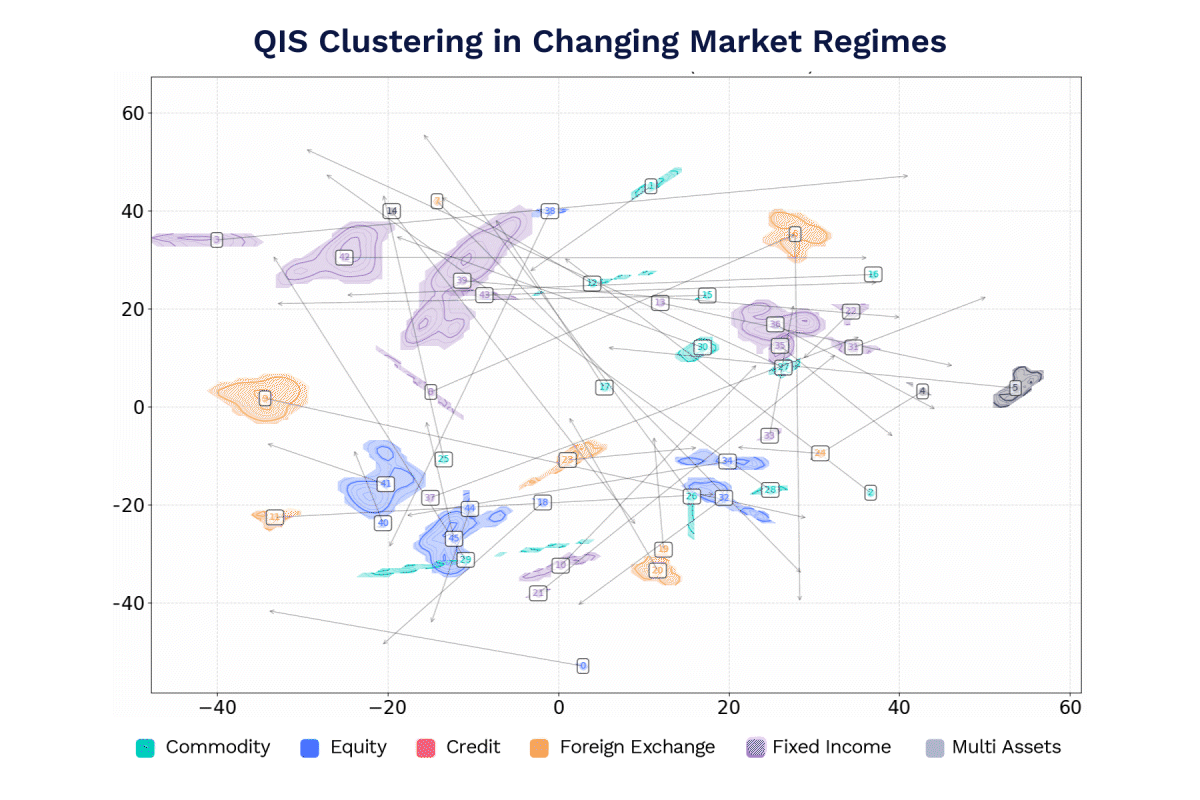Systematic strategies do not behave uniformly across different market regimes. In our latest paper, we analyse how strategy groupings shift between Risk-on and Risk-off conditions using Premialab’s proprietary QIS database and advanced clustering techniques. These shifts reveal significant changes in diversification, crowding, implementation dispersion, and factor exposures, providing valuable insights for asset allocators and risk managers.
Key Findings
-
Cluster structures are regime dependent. Strategy groupings that appear stable in calm markets often break apart during stress, while previously unrelated strategies can converge during volatility spikes.
-
Provider dispersion widens in Risk-off regimes. Strategies that look similar in normal conditions, such as Carry, Momentum, and Volatility premia, diverge sharply in stressed markets.
-
Pure Factor anchors drift. Distances between bank strategies and their closest Pure Factors® increase materially in Risk-off periods, reflecting style drift and implementation heterogeneity.
The paper shows that hidden correlations can emerge under stress, reducing diversification when it is most needed. Implementation differences also become more pronounced, and relying solely on calm-market backtests can overstate independence and underestimate tail risk, creating potential blind spots in portfolio construction, risk management, and manager selection.
Download the paper now to explore the full analysis and its implications for portfolio construction, risk oversight, and allocator due diligence.




